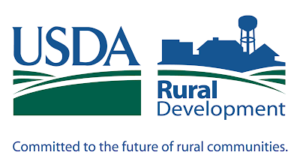 NDIA has submitted comments to the US Department of Agriculture’s Rural Utilities Service (RUS), urging the agency to treat affordability for lower-income rural residents as a key factor in implementing its E-Connectivity Pilot, a new grant and loan program for financing broadband projects in rural areas that lack “sufficient” broadband access.
NDIA has submitted comments to the US Department of Agriculture’s Rural Utilities Service (RUS), urging the agency to treat affordability for lower-income rural residents as a key factor in implementing its E-Connectivity Pilot, a new grant and loan program for financing broadband projects in rural areas that lack “sufficient” broadband access.
The $600 million initiative was approved by Congress as part of the Consolidated Appropriations Act passed in March. The legislation limited eligibility for the funds to areas where 90% of households lack “sufficient access” to broadband service at speeds of 10 Mbps down and 1 Mbps up. RUS issued a Notice of Inquiry in July, asking for public comment on how it should define “sufficient access” in determining a community’s eligibility. The Notice asked specifically whether the affordability of current home broadband services should be a factor; if so, how to benchmark affordability; and “what equates to consumers’ costs being so high that they are effectively rendered inaccessible to rural households?”
NDIA’s comments begin by commending RUS for raising the issue of affordability as a factor in defining the “sufficiency” of broadband access: “This is an important step in bringing some much-needed common sense to the national discussion of ‘bridging the rural digital divide’, which is too often dominated by the single issue of physical network deployment.” NDIA points to data from the FCC and Census suggesting that the median poverty rate of residents of the nation’s worst-connected rural counties is 16%-17%, with rates in some counties twice as high; that this means the $65 per month or more being charged for basic broadband by the most commercial ISPs is equivalent to 5%, 6% or more of many rural households’ total incomes; and that prices like these are a “hard barrier to meaningful broadband adoption by all lower-income consumers, no matter where they happen to live.”
In light of these facts, NDIA’s comments recommend the following:
- Affordability of service absolutely should be included in evaluating whether an area already has ‘‘sufficient access’’.
- RUS should consider setting an affordability benchmark for “sufficient access” that’s based on whether existing broadband costs exceed a reasonable percentage (we suggest 2.5%) of the average income of the poorer half of local households.
- RUS’s project review and approval standards for the e-Connectivity Pilot should give preference to projects:
- whose network business plans include affordable service options for lower-income households, and
- whose marketing and community engagement plans include digital inclusion support in addition to the affordability options (such as community partnerships to provide digital literacy training and access to affordable devices).
